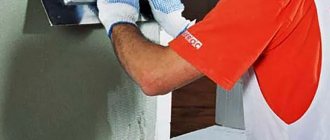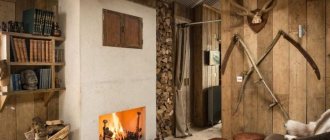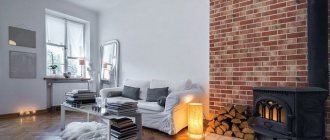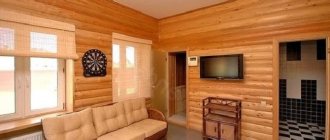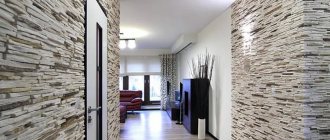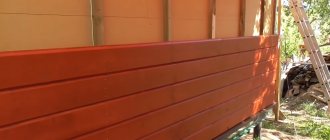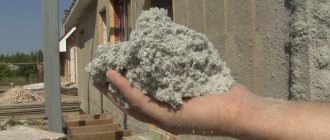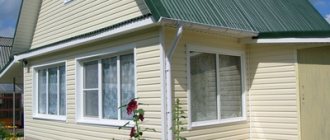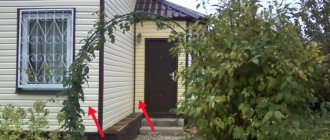Interior decoration of a house made of aerated concrete is a task that is relevant for many, due to the popularity of the building material and the spread of technologies for constructing buildings from it. Aerated concrete has some special features, and therefore requires the correct choice of finishing materials, optimal technology for decorating, and requires compliance with certain rules.
When choosing the type of finishing, first of all, the performance characteristics of aerated concrete are taken into account. Blocks of this type are made from lime, sand and cement with the addition of aluminum chips to create a special porous structure. All components are mixed, the mass is poured into molds, processed at high pressure and temperature in an autoclave, and allowed to harden.
Positive performance properties of aerated concrete:
- Minimum heat loss
- Resistance to sub-zero temperatures and fire
- Good level of sound and heat insulation
- Vapor permeability, which helps create a favorable indoor microclimate
- No risk of fungus and mold spreading over the surface
Due to the above advantages, aerated concrete blocks are an ideal material for the construction of internal and external walls. But aerated concrete is afraid of moisture, so any external and internal decoration of walls made of aerated concrete blocks involves providing high-quality waterproofing and reliable protection of the walls from water and moisture.
Features of interior decoration of walls made of aerated concrete blocks
When deciding how to decorate aerated concrete walls indoors, it is necessary to take into account the structure of the material. Aerated concrete demonstrates a high level of breathability and has a porous structure. If you do not finish the inside of the building walls with finishing material, warm air will enter the pores of the aerated blocks, cool and accumulate there, and then cause condensation.
Thus, the thermal insulation characteristics of the building deteriorate significantly, and the blocks themselves become damp, which also negatively affects the strength and durability of the structure. Therefore, the main task that should be accomplished by finishing walls made of aerated concrete indoors is to reduce the level of permeability of the walls, a kind of “sealing” of the material over the entire surface area. For this purpose, a variety of materials can be selected - sheets of plasterboard, plaster, wooden panels, lining, plastic panels, wallpaper, etc.
Additionally
As some already know, the mixture intended for internal processing of gas blocks is the most important component. Therefore, we can list special parameters that you should pay attention to when choosing a material:
- Adhesion of the mixture. It is the main parameter that determines the strength of future gluing of layers to each other. 0.5 MPA is considered a good indicator.
- In order to get a good consistency, you need to mix 30 kg of plaster with 8 liters of water.
- It is worth paying attention to the timing of the finished plaster. It should not stand for long; the best production time is 3-4 hours.
- There is no need to use plaster for exterior work indoors. Surely she is not suitable for this in terms of parameters.
- The consumption of 1 bag (30 kg) is calculated per 8 sq.m.
Related article: How to attach a chimney to a wall
A house made of aerated concrete block is a modern construction option. It is considered an innovation that has gained popularity in the modern world. You can choose for yourself both a budget construction option and an expensive one, and the range of finishing products in construction stores is incredibly wide.
Recommendations for purchasing finishing materials
In order for the interior decoration of aerated concrete walls to be beautiful and aesthetic, high-quality and durable, it is necessary to choose the right finishing materials. It is quite easy to decide on the type of finish - the choice is huge, each type of finishing coating has its own advantages and disadvantages, which need to be studied first.
The main task is to find materials that will ideally interact with aerated concrete, improving and preserving the advantages of the material and minimizing the impact of its disadvantages on the comfort in operation of the building. You should not save on materials, since the result will depend on their quality.
Even if the optimal type of finishing is selected and all work is performed correctly, due to the low quality of materials, all efforts can be reduced to zero - the finishing will not last long and will not perform its functions.
It is better to purchase materials only from trusted suppliers who have all the documents and provide a guarantee for the product. All goods must exactly correspond to the task, meet the necessary requirements and have certain characteristics. Experts also recommend that when choosing several items, give preference to one manufacturer in order to be absolutely sure that the components of the products will not react and will not lead to surprises.
Painting, wallpaper or tiles: which is better and in what cases?
Painting today has acquired a slightly different meaning: many “breathable” water-based paints have appeared. Bright shades will allow you to create unique combinations, and the ease of applying the coating to a primed layer of finishing plaster or prepared drywall will delight many consumers.
Coating walls with silicone will cost a little more. But its advantages are complemented by the properties of porous aerated concrete blocks. Excellent vapor permeability will allow excess moisture to evaporate without creating a “greenhouse” effect and eliminating the formation of condensation.
Before painting, the plastered walls are carefully leveled: you will need a grinder or a sheet of sandpaper. Minor defects on drywall are masked with starting putty. When painting with your own hands, you will need several layers perpendicular to each other: the first time the wall is painted vertically, the second - horizontally, and so on. For any base (putty, drywall) priming is required.
Ceramic tiles should be used minimally in houses made from similar blocks. This material, combined with the moisture absorption of aerated concrete, can disappoint consumers. Therefore, the tile is appropriate as a zonal finish - for example, an apron in the kitchen, and it is laid on a flat surface. Natural stone can be considered as an option for partial interior decoration, and the scope of application of gypsum imitations is practically unlimited.
Hygroscopic wallpaper on plaster or drywall will also create indoor comfort in block houses. Their choice depends on the initial budget and planned interior features.
In general, the interior decoration of walls made of aerated concrete involves a combination of different finishing materials, combining the best properties of vapor-permeable and vapor-impermeable compounds.
Types of materials and methods of interior finishing
Decorating the inside of a house made of aerated concrete can be done using a variety of methods and materials. The cladding can be different in appearance, functions, properties, cost, and features of working with it.
For rough finishing, plaster and a layer of plasterboard sheets with insulation are usually used. A variety of options can be chosen as a finishing (decorative) coating: textured plaster, paints and varnishes, wallpaper, plastic or wood cladding, etc.
Wood
Wood is an environmentally friendly material that helps create a favorable microclimate in housing, so it is ideal for finishing residential premises. Wooden cladding looks beautiful and cozy, is compatible with aerated concrete in properties, but requires protection from drying out and rotting - mandatory impregnation with antiseptics and coating with a layer of antifungal water-repellent varnish.
Spruce and pine are most often chosen for finishing - they have a pleasant aroma, demonstrate a high level of strength, and are aesthetically pleasing. The material is relatively inexpensive; it is often used to decorate aerated concrete baths indoors.
Ceramic tile
Typically, tiles are laid in rooms where there is a high level of humidity - bathroom, kitchen, bathroom. The tiles create additional protection for the walls, preventing them from becoming damp and destroyed by condensation and steam.
Typically, interior finishing of aerated concrete walls with tiles is done using a special adhesive that ensures high-quality adhesion of the materials. Cement mortar is not suitable in this case, since the composition is subject to requirements for tightness and protection from fungus.
If this finishing option has been chosen, it is imperative to implement a powerful ventilation system so that moisture quickly leaves the room. Only in this case will it be possible to eliminate the risk of mold and mildew spreading indoors.
Wallpapering walls
Wallpapering can be done only after puttying and covering the walls with plasterboard. In this case, the wallpaper can be anything, but it is preferable to choose vinyl. They guarantee aerated concrete walls additional protection from temperature changes and moisture. The paper web is permeable to air, so it is better to combine such wallpaper with a fairly dense layer of plaster.
Wallpapering a wall is done according to the standard scheme - before work begins, the walls are primed, then the wallpaper is glued using a technology appropriate to its type.
PVC panels
Finishing aerated concrete walls inside with plastic panels is the simplest and most inexpensive option. The panels can be of a variety of shades, imitating the texture of stone and wood. The main condition for their installation is the laying of a waterproofing layer, especially when it comes to tiling a kitchen or bathroom or bathtub.
Plastic panels do not like sudden temperature changes, so it is best to avoid using them when decorating corridors and balconies.
Clapboard finishing
This type of finishing is a frame coating, but usually metal profiles are not used. The lining is assembled onto a horizontal or vertical sheathing treated with an antiseptic. If the exterior decoration of the house is done according to the rules, then there is no need to lay a vapor barrier layer under the lining. It is best to install the material on a plastered wall, which will eliminate the risk of blowing through the seams.
Plastic panels
To perform the cladding on the wall, a frame is assembled from horizontal or vertical profiles, wooden slats with a diameter of 50 by 50 millimeters (necessarily dry and carefully treated with an antiseptic). The finishing is attached to dowels for cellular concrete, the panels are assembled using a locking connection.
This option will be the best for rooms with high humidity, but for baths, for example, it is not suitable, as it is afraid of too high a temperature.
Plaster as a finishing option
Interior finishing of aerated concrete can be done using plaster. Typically, this method is used when making a rough layer for subsequent wallpapering or painting. But you can choose decorative plaster, which will add aesthetics to the surface.
For finishing aerated concrete blocks, it is better to use special plaster mixtures that have the following characteristics: the ability to retain moisture (therefore, during the application process they do not penetrate into the structure of the block), improving the adhesion of aerated concrete and plaster, giving the solution plasticity and comfort in work, accelerating the process of hardening of the solution on the wall, increasing the strength of the finish, eliminating the appearance of cracks.
It is better to let professionals perform finishing work with plaster - due to the texture of the blocks and the possible unevenness of the seams, it is difficult to work with the surface. The plaster needs to be given time to dry, so the entire process of finishing the house can take up to several weeks. If there are irregularities and installation of reinforcing mesh is required, the time required to complete the work may be increased.
Painting aerated concrete surfaces
The interior decoration of a house made of aerated concrete can be done using paint. But painting is carried out exclusively after plastering the surface and finishing it with plasterboard boards. Usually the following types of water-based paint are chosen: silicone, acrylic, mineral, silicate.
To additionally protect the wall surface from water, acrylic paint is used, which demonstrates water-repellent properties. Silicate and silicone allow air to pass through well, so they require applying a dense layer of plaster.
Finishing with plasterboard boards
Installing plasterboard sheets can also be an excellent choice. Depending on the evenness of the wall masonry, one of two finishing methods is chosen: gluing slabs to smooth walls or installing a metal frame and insulation under plasterboard.
Gypsum plasterboards will be an ideal basis for any type of decorative finishing - they can be covered with a layer of plaster, wallpapered, or painted. Unless the interior walls of a bathhouse are decorated with aerated concrete, this option will not work - wood is still preferable.
PVC panels
One of the most budget-friendly finishing options. They can be of different colors, different textures (even wood or stone tiles). Before installation, treat the walls with a waterproofing layer.
It is important to consider that PVC panels are not resistant to temperature differences and, therefore, it is not recommended to install them on outdoor premises (balconies, verandas).
When installing a PVC panel, the wall must already be leveled and there must be excellent ventilation in the room, since the panels are not very resistant to moisture.
